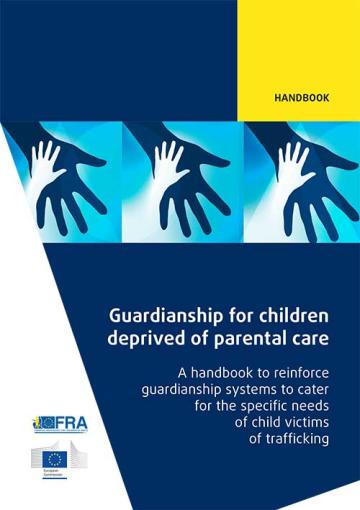Child Trafficking in the EU - Challenges, perspectives and good practices
Background
In July 2007, the European Commission asked the FRA to develop indicators to measure how the rights of the child are implemented, protected, respected and promoted in the EU Member States. The indicators were published by the Agency in March 2009.
In October 2007, the European Commission requested that the Agency started collecting data on the basis of these indicators. Following a consultation meeting with other international organisations and the European Commission in Vienna, in April 2008, it was agreed that the FRA's first thematic study on the rights of the child would focus on child trafficking.
Key findings
Many children fall victim to trafficking every year
Trafficking in human beings is a major problem both in the EU and worldwide. Every year a substantial number of children fall victim to trafficking for sexual exploitation or other purposes. Estimates as to the full extent of the problem have been provided by some reputable sources, yet there are no studies or reliable statistics to provide a comprehensive picture. A clear definition of child trafficking is lacking in both the EU legal framework, and at Member State level.
Children disappearing from shelters most likely fall victim to trafficking
According to NGOs, the disappearance of children from shelters in the EU Member States is widespread, with their destinations largely unknown. However, this problem remains largely ignored, with a severe lack of monitoring as a result of insufficient data collection in at least 9 Member States. Only a few Member States have developed policies to tackle this issue.
Extremely low number of child trafficking convictions
There are generally very few final convictions in child trafficking cases. Convictions for child trafficking could only be detected in 4 Member States in the 2000-2007 period.
Identification of victims is vital to prosecuting traffickers
The identification of victims of child trafficking is crucial to prosecuting traffickers and providing victims with protection and assistance.
Protection of child victims of trafficking needs to be a priority
According to international law, the interests of children must always be a primary consideration at the heart of all law. However this is still not the case for child trafficking. This 'principle of best interests of the child' is, amongst others, enshrined in Article 24 of the Charter of Fundamental Rights of the EU. Member States have important interests in combating crime and regulating immigration. However, these policy goals should not be allowed to overshadow the best interests of victims of child trafficking.
Erratum for FRA report on ‘Child Trafficking in the EU - Challenges, perspectives and good practices'
The first paragraph on page 131 should read correctly:"In another group of Member States (Bulgaria, Greece, Spain, France, Ireland, Cyprus, Lithuania, Luxembourg and the United Kingdom) relevant monitoring mechanisms on children's rights are in function. In the mandates of these mechanisms the issue of child trafficking may be explicitly included. Examples of these mechanisms are: the Bulgarian State Agency for Child Protection, the Cypriot Commissioner for the Rights of the Child, the Children's Ombudsman that is in function in Greece, Spain, France, Ireland, Lithuania and Sweden, the Irish Special Rapporteur on Child Protection, the Luxembourg Children's Rights Ombudscommittee and the UK Children's Commissioner."

